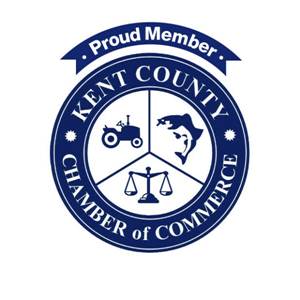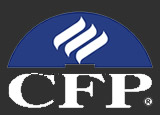Debt must be a wonderful thing. Just look at how much debt the good Ole USA has—and we are the largest economy in the world—by far. If the richest, most prosperous nation in the world is also the one that borrows the most money, then is it a leap to think that what debt has done for the US can also do for our personal finances? The answer in a word is, no; a big NO as a matter of fact. In this edition we are going to look at how to improve our personal Balance Sheet.
Debt in the financial world is called leverage (leverage sounds better, but it is just a euphemism for debt.) Leverage can, when used properly create greater financial results with fewer dollars. Many corporations use leverage to increase returns on their equity. Leverage in finance works like it does in the mechanical world; proper positioning of a lever and fulcrum multiplies force, hence a little effort can move a big object.
Leverage then—moving big things with little effort‐‐works in our personal financial world too. A good example is how a person can, as long as they qualify “buy” a home that’s worth several times their annual salary. All that person needs is a down payment (about 20% of the price) to start the moving vans rolling. Ideally, the buyer will purchase a home within their means with a monthly payment they can afford.
In a typical home sale what really happens is that the bank is buying the home—and the “home owner” agrees to pay the bank back over the next 15 to 30 years. (Incidentally, a good rule‐of‐thumb on mortgages is that the monthly payment should not be more than about 28% of your gross monthly income. So if you make $60,000 per year‐‐before taxes—you should have monthly house payment of no more than around $1,400.)
The trouble with leverage is that it’s easy to overuse—taking too much debt with too little earnings. Debt‐servicing is a monthly drain on your paycheck—money you earn but are not allowed to keep because it has already been spent. So how do we control ourselves?
Well, some self‐control comes from monitoring. In the corporate world there are three financial statements required of all publically traded companies—Cash Flow Statement, Income Statement, and Balance Sheet. In contrast, as individuals, we are only required to submit one report; the Income Statement.
We don’t call it an Income Statement but the dreaded IRS Form 1040 is basically the same thing and you are required to file it every April 15. While a ton of work goes into the Form 1040, not much is learned about our financial health.
And as a matter of practice we live‐and‐breathe the Cash Flow statement everyday—cash flows in via the paycheck, and it flows out through the checking account to pay the bills. Any cash remaining is considered disposable income, which is what most people do—they dispose of it.
Incidentally, not enough people go through the effort of doing a formalized Cash Flow Statement or a detailed listing of where the money went‐‐but the practice is eye‐opening. I recommend a simple exercise of writing down each and every time any money is spent, no matter how small. Without changing your habits simply record all spending for a couple of months. After about eight weeks add the numbers up and see how you did. People marvel at the amount of money spent through simple purchases like coffee, soft drinks, night clubs or fast food. This daily accounting is the first step to creating a realistic budget—the subject of a future article.
The final document, the Balance Sheet is a report I believe everyone should put together every few years. The Balance Sheet is simply a formalized accounting of all debts (liabilities) and assets. Sitting down at the dining room table and writing out a balance sheet really gives you a deeper understanding of your financial position.
They are not that hard to do. First, on the left side of the page list all of your debt, and be sure to include all the long‐term debts you have outstanding—car loans, home mortgages, student loans, home equity lines of credit, credit cards, anything you owe money for and carry a monthly balance, put it on the list. Then on the right side list everything you own—your assets, checking account balances, bank CD’s, stocks, mutual funds, home equity, etc.
Next, compare the two lists and the difference is your net‐worth. By the way, if your liabilities outweigh your assets don’t lose sleep or feel inadequate; depending on your age and where you are in your life’s plan many of your assets should be appreciating, and hopefully the liabilities will be decreasing, so the trend is in your favor. Remember, you increase your net‐worth when liabilities are reduced and/or assets appreciate. Periodic updating of the sheet tracks your progress.
As many of us know, a problem with most balance sheets is that often liabilities do not shrink—rather they grow; quickly, like March dandelions. Furthermore, if you are having problems paying down your debt while you are working, it only gets worse when you retire.
If you are not keeping constant and close track of the debt, you’re much more likely to add, rather than subtract from the liabilities. Sooner or later, if liabilities continue to grow, servicing that debt will overcome current income and a death‐spiral of borrowing to pay debt begins.
A caveat, debt‐is‐debt—but not all debt is equal. We’ve shown how mortgage debt can be a good thing—obviously we all can’t live at the local Barrack. And in most circumstances buying a home is better than renting, so carrying a mortgage is natural. Additionally, most mortgage interest is deductible on the 1040 so you can save on some income tax.
I believe the worst debt is, of course, on credit cards with high interest rates. This is bad debt—yes, very bad debt. Besides sky‐high interest rates, credit card debt is often the result of the worse kind of purchases, the spur of the moment, impulsive, just got‐to‐have purchases. Stuff you actually have no reason to own. Our closets and garages and basements are stuffed with this junk. Stuff that’s obsolete before it’s paid for, the cost of which sits on that credit card statement incurring additional interest charges. So that $75 Hawaiian shirt from the super‐cool shop at the mall ends up costing $110 by the time you pay for all the interest. $110 of income in a 25% marginal tax bracket requires over $146 in pre‐tax income—for a shirt you don’t wear!
So great, we all now know debt is bad, but what if you already have a bunch of leverage (we can call it leverage too if it makes everyone feel better.) Here’s a nifty little tactic for getting rid of it. I didn’t invent it and I don’t even know who to credit with coming up with the idea, but in practice I’ve seen it work.
Take out your balance sheet where you listed all of your debts and add a column next to them showing their monthly payments. Do yourself a favor and put it on a computer spreadsheet. Then, except for the mortgage, sort the list by principal owed‐‐smallest to largest. Put the mortgage last regardless of its value.
Next, somehow, someway find an extra couple of hundred dollars a month and add it to the first (smallest balance loan.) You can find this extra couple of hundred bucks from doing your cash flow statement and cutting out a restaurant visit once every other week. As you work on paying down the smallest loan, continue to run your balance sheet every month. Then when you’re done with the first loan, you add that payment to the second payment and start rolling them up.
Here’s an example: Monthly Payment Principal Outstanding 1. Car Payment $ 325 $ 7,500 2. Credit Card $ 200 $ 10,250 3. Boat Payment $ 330 $ 13,500 4. Student Loan $ 195 $ 17,900 5. Car Payment $ 450 $ 21,000 6. House Payment $1,350 $115,000 Totals $2,850 $185,150
In the first month make all the payments as normal, but add an extra $200 (or whatever you can afford) on the first car payment for a gross payment of $525. Continue this until the loan is paid off (about 15 months on a 7% loan).
When loan #1 is paid off take the $525 you were paying on it and add it to the $200 from loan #2 (credit card) for a total new payment of $725. (Now, when the credit card is paid off have a small midnight party with your significant other, cut the card in half, dig a hole in the back yard, put the two pieces of card into the hole, set them on fire, and when it’s a little piece of sizzling black plastic cover it with dirt. Then both of you tamp the dirt till level.)
In the month after paying off debt #2 take that cumulative $725 and add it to the $330 for loan #3 for a total payment of $1,055. And so on! By the time you get to Loan #6 you will be writing one check a month for debt service and putting a full $2,850 onto your mortgage—your last big debt of this lifetime.
But, you may protest, by this time there will be new car loans and new boat loans, kids off to college etcetera. Of course there will be new borrowing. But here’s your new personal rule: “you are not allowed to bring on new substantial debt until the non‐mortgage loans are paid for.” That needs to be your rule—and you need to stick with it. I repeat; you need to rid yourself of all debt down to your mortgage. Follow the rule or continue to run on the financial treadmill. In just a few years you will have eliminated much of your debt while only sacrificing the new car/new boat/new Hawaiian shirt and a couple of restaurant visits per month. You won’t need a new car you’ll be walking on air.
Remember, by the time you stop earning a regular paycheck (in other words, when you retire) you want to be done with those parasitical monthly debt payments and begin enjoying the finer things in life—like a peaceful end of the month and a wonderful retirement.
Marty Knight, MBA is a retired Captain from the Maryland State Police and is currently a Financial Advisor with Chesapeake Investment Advisors, Securities and Advisory services are offered through Geneos Wealth Management, Inc. Member FINRA/SIPC. He can be reached at 800‐994‐0221


